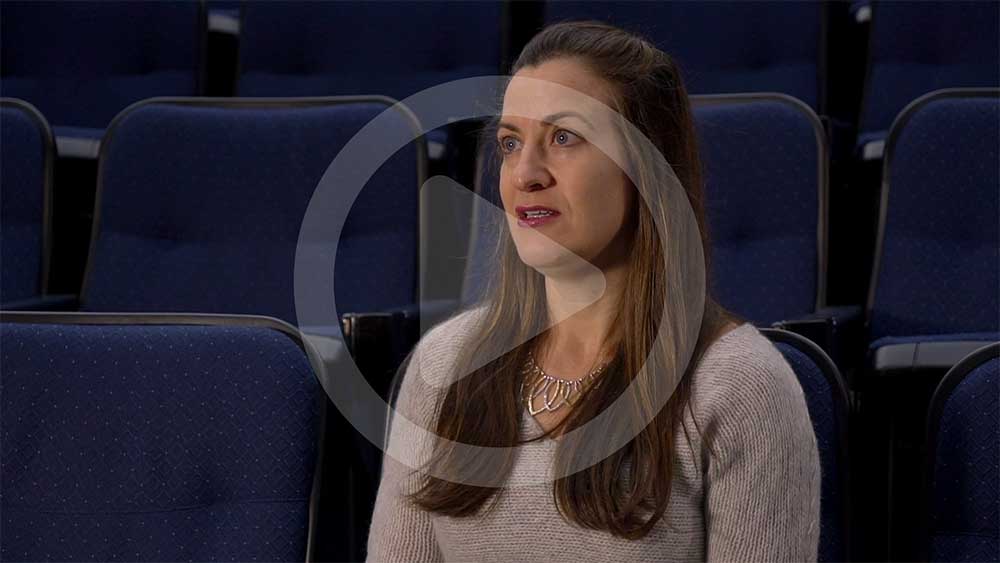Anesthesia Assistant Program

Program at a glance:
Credential Earned: Graduate Certificate
Program Length: 1 year (Part-time)
Program Delivery: Online with on-site residential simulations
Start Date: September 2025
Application Deadline: May 31, 2025
About the Program
Michener’s Anesthesia Assistant program consists of three semesters. The cohort starts in September with a comprehensive online course over the first 13 weeks. During Week 14, the students attend five days of synchronous online sessions that include case presentations.
In the second term, the program consists of online collaborative learning. Students must be available online one day per week for 14 weeks, plus two five-day residency weeks that include simulations and evaluations in the classroom and simulation lab.
The clinical semester is offered following successful completion of semesters one and two. The student completes competencies and rotations in adult, pediatric, obstetrical, regional and cardiac anesthesia at their designated base site. When the base site cannot offer all rotations, Michener will arrange for external rotations in these areas, which are up to two weeks in length. All students will complete at least one external rotation.
The Anesthesia Assistant program is accredited by the Canadian Society of Respiratory Therapists (CRST) . Accreditation is a quality improvement process that ensures educational programs meet national standards and that students acquire the knowledge, skills, and competencies for safe and effective care at entry to practice.
“Every week we participate in online discussions with experienced, practicing Anesthesiologists. This high-quality, personalized education has allowed me to gain a strong foundation for my future career.”
Take an Anesthesia Assistant Virtual Tour
Apply now on ontariocolleges.ca (Fall 2023 Intake)
Admission Requirements
Register for the program webinar on March 5 at 12 pm here
About the Profession
Anesthesia Assistants or Anesthesiologist Assistants (AA) are specially trained Registered Respiratory Therapists or Critical Care Registered Nurses that participate in the care of the stable surgical patient during general, regional, or conscious sedation anesthesia.
The Anesthesia Assistant (AA) is a mid-level anesthesia provider and is a valuable member of the Anesthesia Care Team (ACT) who works under the direct supervision of the anesthesiologist and under the authority of medical directives.
Most Anesthesia Assistants work in the operating rooms of a hospital, but they can also be found in post-operative care areas, pain clinics and special procedure rooms.
Duties of an Anesthesia Assistant include performing activities such as the provision of conscious sedation, administration of anesthetic gases and medications, insertion of hemodynamic monitors and assessment of depth of anesthesia, monitoring a patient’s hemodynamic status, blood, fluid and pharmacological therapy, providing technical support to the anesthesiologist for complex anesthesia equipment, and providing airway management.
What Will I Study?
When you enroll in the Anesthesia Assistant program, you will learn how to evaluate the pre, peri and postoperative patient, how to perform procedural sedation and how to manage special anesthetic considerations.
Semester 1
In the first term of the program, you will begin to acquire the technical expertise, knowledge and interpersonal skills needed to become a valuable member of the anesthesia care team. The 1st semester consists of one comprehensive course and includes a 5-day residency at the end of the course work. Course competencies include:
- Exploring the pharmacological principles of anesthesia and categorizing the clinical manifestations of pharmacological agents used in anesthesia
- Developing strong technical expertise in all equipment associated with the anesthetic gas machine and pollution control systems
- Developing strong technical and clinical expertise in the use of physiologic monitoring equipment
Semester 2
In the second term, one comprehensive course is delivered online and in the simulation lab. Learners are required to be available online one day per week for 14 weeks to present their case studies and participate in discussions and scenario re-enactments which occur in the simulation centre. The semester includes two 5-day residential weeks. Course competencies include:
- Evaluating the pre, peri and postoperative patient
- Advanced airway management
- Assisting with pharmacological therapy
- Maintaining fluid therapy
- Assisting with the administration of peripheral nerve blocks, spinal anesthetics and epidurals
- Assisting with the administration and maintenance of general anesthesia for stable patients
- Performing procedural sedation
- Managing special anesthetic considerations
Semester 3: Clinical
Students will then be required to complete a minimum of 12-week clinical rotation, including an elective rotation external to the assigned base site, within a 6-month period. Course competencies on adult and pediatric patients include:
- Evaluating the pre, peri and postoperative patient
- Advanced airway management
- Assisting with pharmacological therapy
- Maintaining fluid therapy
- Assisting with the administration of peripheral nerve blocks, spinal anesthetics and epidurals
- Assisting with the administration and maintenance of general anesthesia for stable patients
- Performing procedural sedation
- Managing special anesthetic considerations